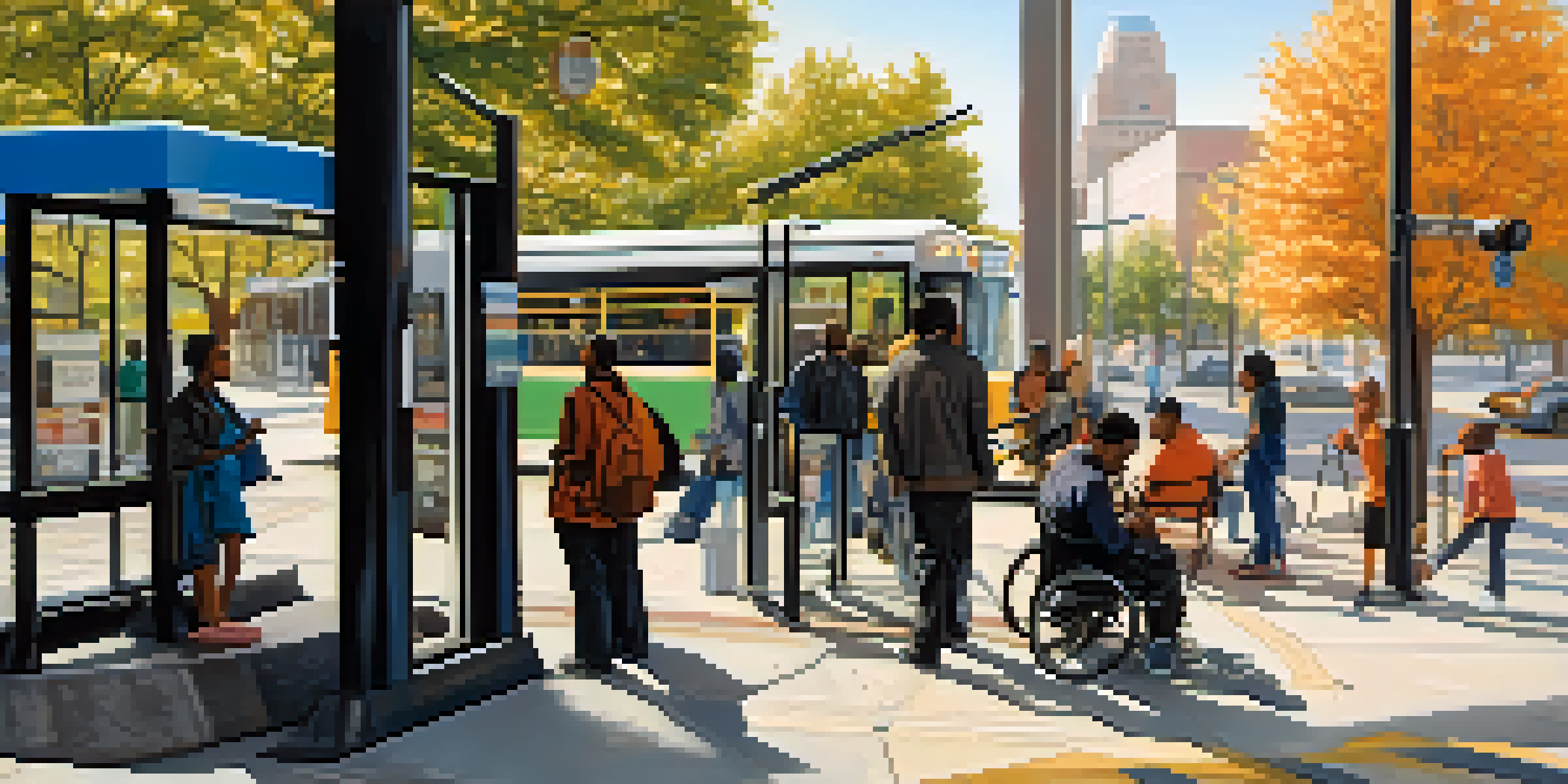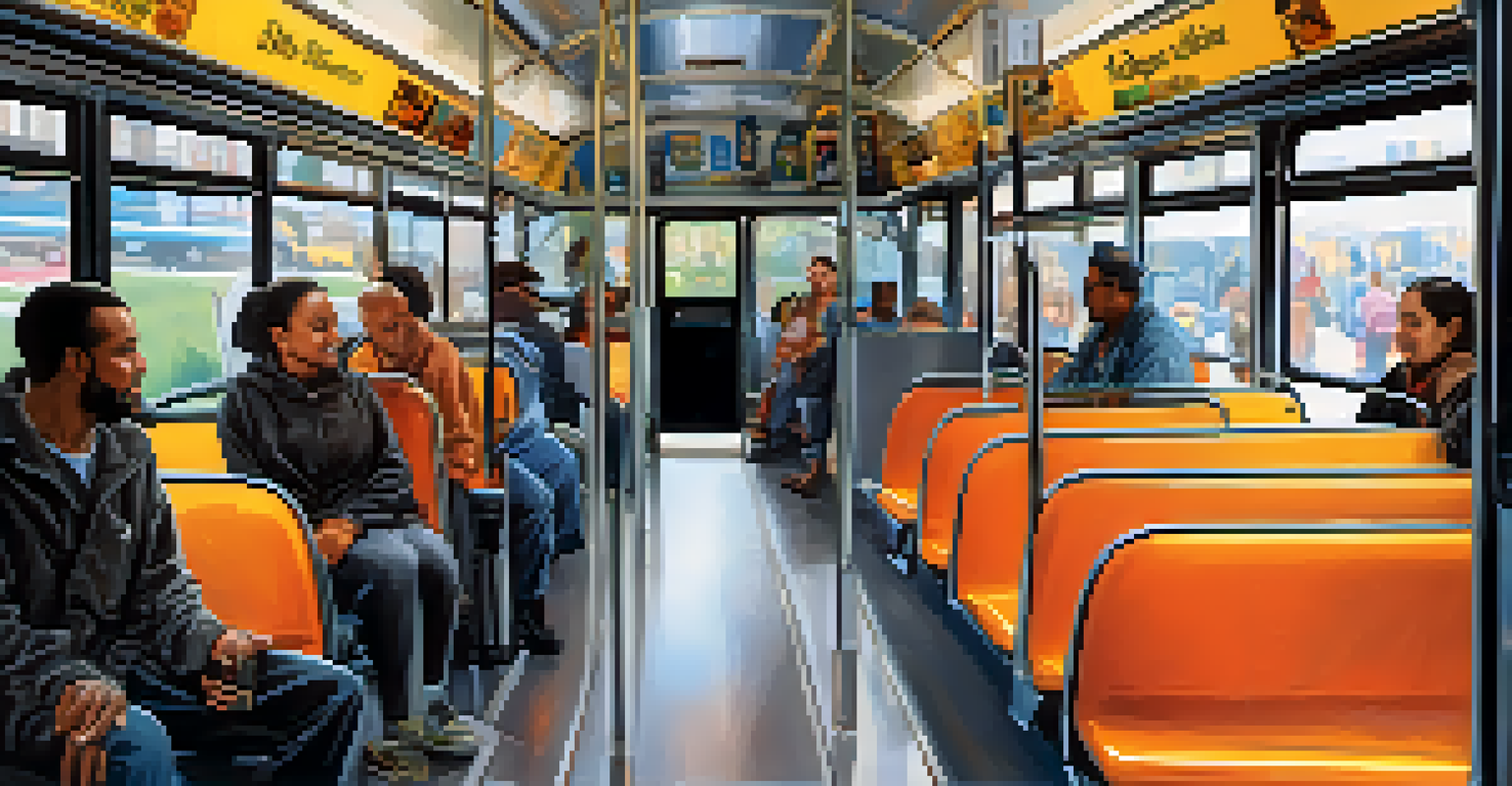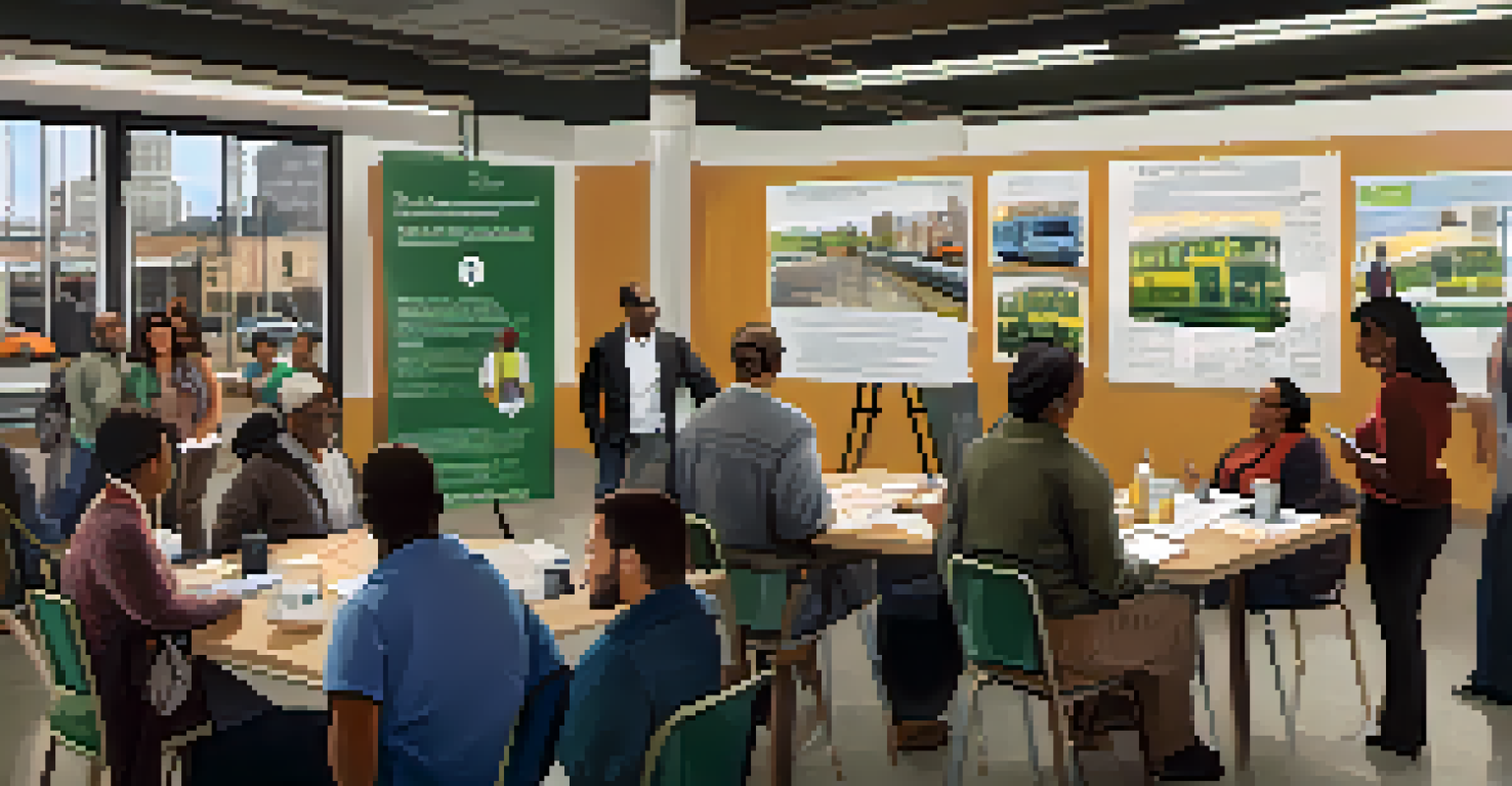Public Transit Accessibility in Detroit: An Urban Perspective

Understanding Public Transit Accessibility in Detroit
Public transit accessibility refers to the ease with which all individuals can use public transportation systems, regardless of their physical abilities. In Detroit, this concept is crucial, as many residents rely on buses and trains to commute for work, education, and daily activities. Accessibility isn't just about physical access; it also includes information availability and service frequency.
Accessibility is not a privilege, it is a right.
Detroit's public transit system, primarily operated by the Detroit Department of Transportation (DDOT) and the Suburban Mobility Authority for Regional Transportation (SMART), has made strides in recent years. However, challenges remain, particularly for individuals with disabilities or those living in underserved areas. The goal is to create a system where everyone can navigate efficiently and comfortably.
Understanding the nuances of accessibility helps us recognize the importance of inclusive urban planning. With a focus on improving public transit, Detroit can foster a more connected and equitable environment for all its residents.
Current State of Accessibility Features in Detroit Transit
The current public transit system in Detroit features several accessibility options, including low-floor buses and designated seating for individuals with disabilities. Additionally, many transit stops have been updated to include ramps and tactile paving, making it easier for those with mobility challenges to board and deboard. However, not all transit stations are fully compliant with the Americans with Disabilities Act (ADA), leaving gaps in service.

Moreover, the availability of real-time information about schedules and routes is another critical aspect of accessibility. Riders can often access this information through mobile apps or digital displays, but the consistency and clarity of these tools can vary significantly. This inconsistency can create confusion, particularly for those who rely heavily on public transit to navigate the city.
Accessibility Challenges Persist
Despite improvements, significant challenges remain in making Detroit's public transit fully accessible for all residents.
While there have been improvements, ongoing assessments and adjustments are necessary to ensure that accessibility features meet the diverse needs of Detroit's population. The city must continue to prioritize these enhancements to create a truly inclusive transit experience.
Challenges Facing Public Transit Accessibility in Detroit
Despite the progress made, significant challenges persist in making public transit fully accessible in Detroit. Limited funding often hampers the expansion and maintenance of accessible features, leading to inconsistent service across the city. Moreover, many neighborhoods lack adequate access to public transit, placing additional burdens on residents who rely on these services.
Public transport is a lifeline for many, providing access to opportunities and services that enhance quality of life.
Another challenge is the social stigma that can accompany using public transit, particularly for individuals with disabilities. This stigma can discourage individuals from utilizing available services, leading to isolation and decreased mobility. Addressing these perceptions is essential for fostering a more inclusive community where everyone feels comfortable using public transit.
In light of these challenges, collaboration among various stakeholders—local government, transit agencies, and community organizations—is vital. Together, they can work towards implementing solutions that enhance accessibility and ensure that all residents can benefit from Detroit's public transit system.
Community Initiatives Promoting Transit Accessibility
In response to accessibility challenges, various community initiatives are emerging in Detroit aimed at improving public transit. Local organizations are partnering with transit authorities to advocate for better services and infrastructure. These grassroots efforts often focus on raising awareness about the importance of accessible transit options for all residents.
For instance, community workshops and public forums have been hosted to gather feedback from residents regarding their transit experiences. These platforms allow individuals to share their insights and suggest improvements, creating a sense of ownership over the transit system. Engaging the community in this way is crucial for identifying practical solutions to accessibility issues.
Community Initiatives Drive Change
Local organizations are actively working to improve transit accessibility by engaging residents and advocating for better services.
Such initiatives not only bring attention to the need for accessible transit but also empower individuals to take action. By fostering collaboration and dialogue, Detroit can build a more inclusive public transit system that meets the needs of all its residents.
The Role of Technology in Enhancing Transit Accessibility
Technology plays a pivotal role in enhancing public transit accessibility in Detroit. Innovations like mobile apps provide riders with real-time information about bus and train schedules, helping them plan their journeys more effectively. These tools can be particularly beneficial for individuals with disabilities who may require specific accommodations during their transit experience.
Additionally, advancements in transportation technology, such as on-demand shuttle services, can complement traditional transit options. These services can be tailored to meet the needs of individuals with mobility challenges, offering door-to-door transportation solutions that enhance overall accessibility. Such flexibility is crucial in a city where public transit options can sometimes be limited.
As technology continues to evolve, there is potential for even more significant improvements in transit accessibility. By embracing these innovations, Detroit can create a more responsive and inclusive public transit system that serves all residents.
Policy Recommendations for Improving Transit Accessibility
To address the current gaps in public transit accessibility, several policy recommendations can be considered. First, increasing funding for transit infrastructure improvements is essential to ensure that all buses and stations are fully ADA-compliant. This investment would not only enhance physical accessibility but also improve the overall reliability of the transit system.
Secondly, implementing regular assessments of transit services can help identify areas that need improvement. By gathering data on accessibility challenges faced by riders, transit authorities can make informed decisions about where to direct resources and efforts. This proactive approach can prevent issues from persisting and ensure that accessibility remains a priority.
Technology Enhances Transit Access
Innovations like mobile apps and on-demand services are crucial for improving the public transit experience for individuals with disabilities.
Finally, fostering collaboration between transit agencies and community organizations can lead to more effective solutions. By involving residents in the decision-making process, Detroit can create a public transit system that truly reflects the needs of its diverse population.
The Future of Public Transit Accessibility in Detroit
Looking ahead, the future of public transit accessibility in Detroit holds promise as long as commitment and action align. Continued advocacy for funding and policy changes is vital, alongside community engagement in shaping transit services. A collective effort can lead to a more connected and inclusive city where everyone has access to essential services.
Furthermore, as Detroit evolves, so too must its public transit system. Embracing sustainable practices and innovative technologies can enhance accessibility while addressing environmental concerns. This forward-thinking approach not only benefits current residents but also sets the stage for future generations to thrive in an accessible urban environment.

In conclusion, while challenges remain, the potential for an accessible and equitable public transit system in Detroit is within reach. By prioritizing collaboration, technology, and community voice, we can pave the way for a transit system that serves everyone in the city.